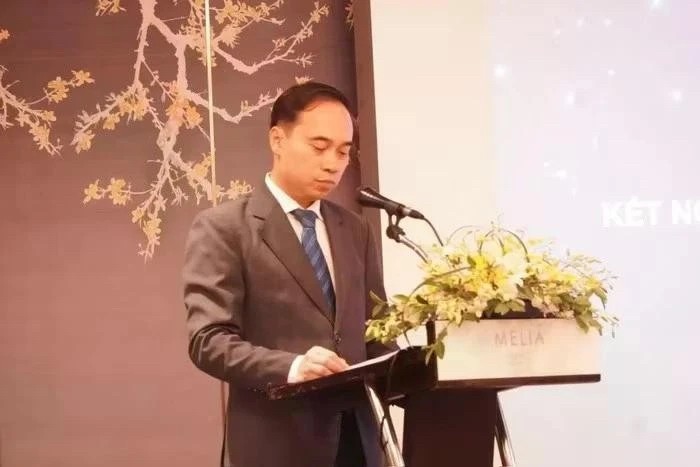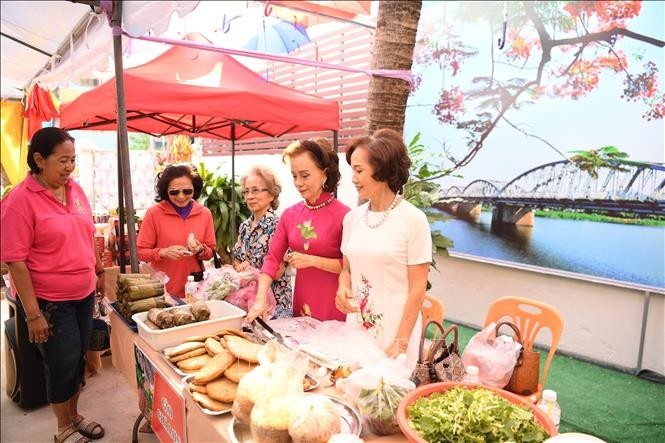10 Ancient Writings Of Vietnam Recognized By UNESCO
Within the framework of the 10th Plenary Conference of UNESCO's Asia-Pacific Memory of the World Program Committee held in Mongolia on May 8, 2024, the “Nine Dynastic Urns In The Hue Imperial City” were officially inscribed on UNESCO's Asia-Pacific Documentary Heritage List.
The Nine Dynastic Urns were cast in Emperor Minh Mang's Era (from October 1835 to January 1837). They were placed in front of The Mieu Temple, (where the kings of the Nguyen Dynasty are worshipped,) symbolizing the career of the emperors.
The Nine Dynastic Urns is a sacred treasure that embodies the eternity of the dynasty and demonstrates the power and strength of a unified dynasty.
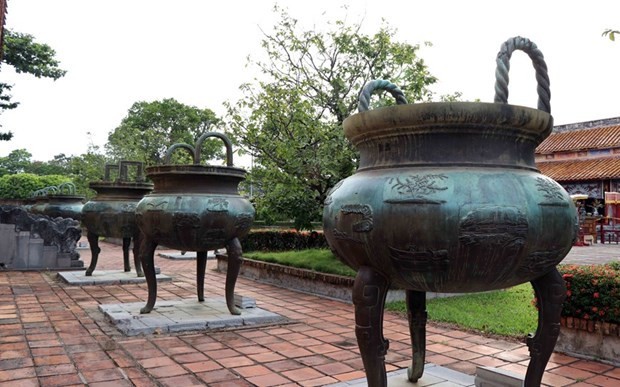 |
| The Nine Dynastic Urns were cast in Emperor Minh Mang's Era (from October 1835 to January 1837). Photo: Vietnamnet |
According to Hue Monuments Conservation Center, the Nine Dynastic Urns are like a picture encyclopedia with 162 delicately embossed patterns.
Artisans in Minh Mang's era portrayed the landscape diversity of the country and typical objects of each region of the country such as stars, mountains, rivers, seas, gates, trees, flowers, animals, weapons, vessels, etc. The patterns on the urns are both royal and folk, familiar to most Vietnamese people.
With this addition, the country now boasts 10 heritage sites inscribed on the UNESCO Memory of the World Register in the Asia-Pacific region, including 3 documentary worlds and 7 documentary heritages.
Woodblocks of the Nguyen Dynasty (recognized in 2009)
Woodblocks of the Nguyen Dynasty are a special type of document in terms of form, content, and manufacturing method. It is the original copy of the famous official literature and history sets of Vietnam compiled, engraved, and printed during the Nguyen Dynasty.
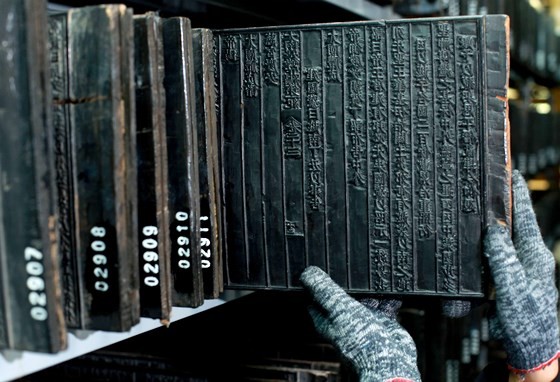 |
| Woodblocks of the Nguyen Dynasty are a special type of document in terms of form, content, and manufacturing method. Photo: thuathienhue.gov |
Woodblocks were formed by the technique of reverse engraving Han Nom characters on wood to print books, which was commonly used during the feudal period and is still preserved today.
Woodblocks of the Nguyen Dynasty were recognized by UNESCO as a Documentary Heritage under the Memory of the World Program on July 31, 2009, and became Vietnam’s first World Documentary Heritage.
Doctoral laureate Steles of Temple of Literature (recognized in 2011)
The stone steles in the Temple of Literature are accurate historical documentation of royal examinations between 1442 and 1779. Their inscriptions provide many valuable historical details of Vietnam’s traditional education for 300 years.
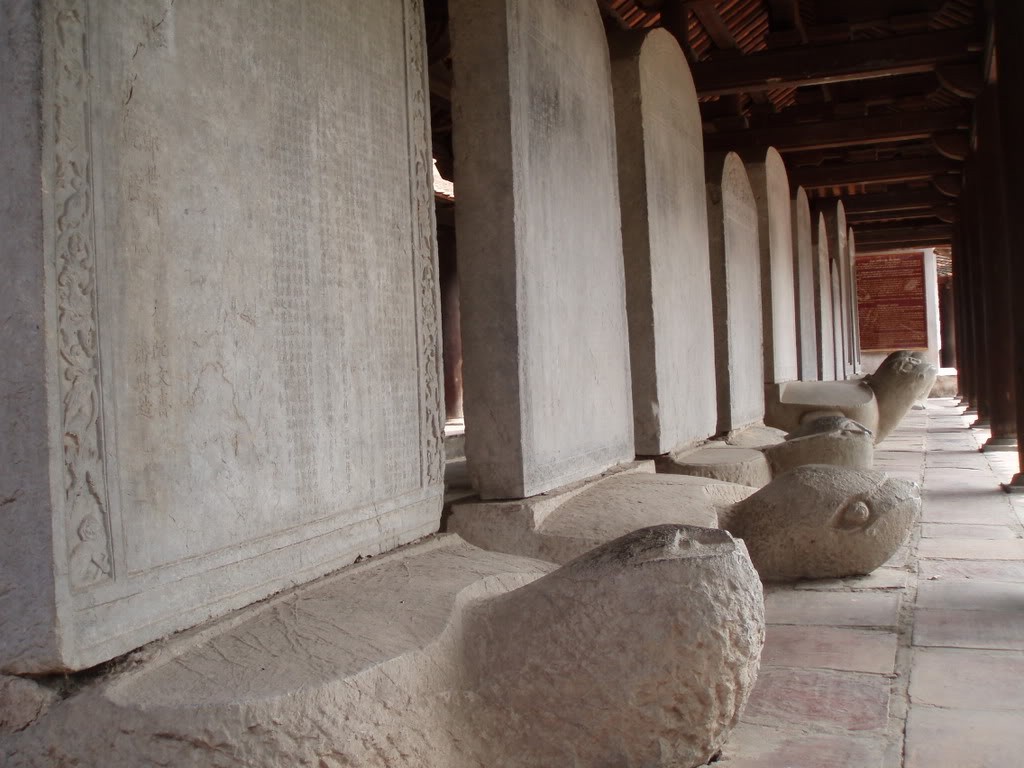 |
| The stone steles in the Temple of Literature are accurate historical documentation of royal examinations between 1442 and 1779. Photo: vietnamtourism |
In March 2010, 82 doctoral steles at the Temple of Literature - Quoc Tu Giam were recognized by UNESCO as a World Documentary Heritage in the Asia-Pacific region. By July 2011, 82 doctoral steles were recognized as World Documentary Heritage on a global scale.
Woodblocks of Vinh Nghiem Pagoda (recognized in 2012)
Woodblocks of Vinh Nghiem Pagoda (Duc La village, Tri Yen commune, Yen Dung district, Bac Giang province) have important significance in assessing the process of autonomy in the thought and culture of the nation and help research the development of the Vietnamese language and writing system.
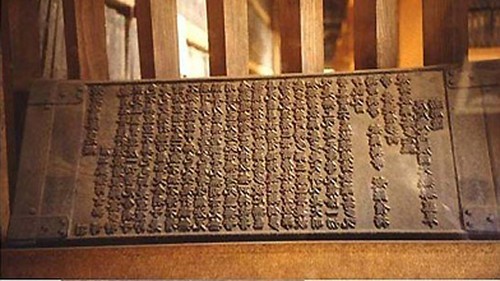 |
| Woodblocks of Vinh Nghiem Pagoda (Duc La village, Tri Yen commune, Yen Dung district, Bac Giang province) have important significance in assessing the process of autonomy in the thought and culture of the nation. Photo: VOV |
The woodblocks have unique documentary values and are rich in humanistic meaning, as shown in the following: Truc Lam Zen sect was founded by Tran Nhan Tong - an emperor who became a monk and was the first separate Buddhist sect in Vietnam.
Royal literature on Hue royal architecture (recognized in 2016)
On May 19th, 2016, literature on Hue royal architecture was recognized as a documentary heritage of the Memory of the World Committee for Asia-Pacific region.
According to experts, literature on Hue royal architecture is the unique royal architectural decoration that has not been found anywhere in the world. This system of literature heritage is a lively and unique museum of literature under the Nguyen dynasty. It shows spectacular historical, cultural, and art messages of the Vietnamese modern history period.
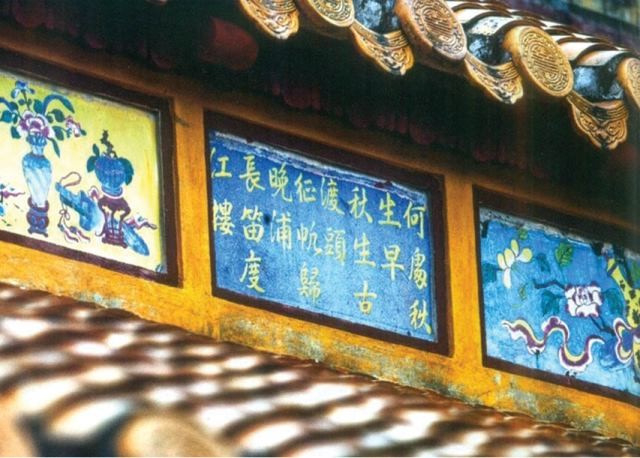 |
| On May 19th, 2016, literature on Hue royal architecture was recognized as a documentary heritage of the Memory of the World Committee for Asia-Pacific region. Photo: Hue News |
Dr. Phan Thanh Hai, Director of Hue Monuments Conservation Center said "It is a system of heritage in heritage, a priceless cultural treasure of Hue, Vietnam which has not been widely known. Except for destroyed works, the system is still well-conserved today. This heritage deserves to be the world documentary heritage honored and conserved sustainably for the coming generations”.
Phuc Giang School Woodblocks (recognized in 2016)
The 379 original woodblocks, the unique collection of its kind in Vietnam, produced manually by Nguyen Huy family members from 1758 to 1788, contain knowledge reflecting various values concerning history, politics, culture, education, economy, society, ideology, and interaction among different families. Each woodblock is a unique work of art, aesthetically elaborate containing beautiful calligraphic styles.
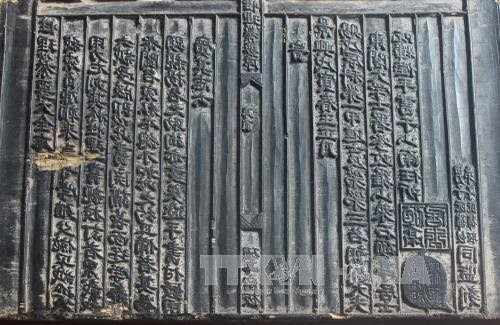 |
| The 379 original woodblocks, the unique collection of its kind in Vietnam, were produced manually by Nguyen Huy family members from 1758 to 1788. Photo: VOV |
All woodblocks were compiled by five famous cultural figures of the Nguyen Huy family, including Nguyen Huy Tuu, Nguyen Huy Oanh, Nguyen Huy Cu, Nguyen Huy Quynh, and Nguyen Huy Tu. Most of these people participate in teaching at Quoc Tu Giam.
The Envoyship Journeys to China (Recognized in 2018)
Hoang Hoa Su Trinh Do (The Envoyship Journeys to China – translated as maps and itinerary of the envoy’s journey to China) belonged to the Nguyen Huy family in the central province of Ha Tinh.
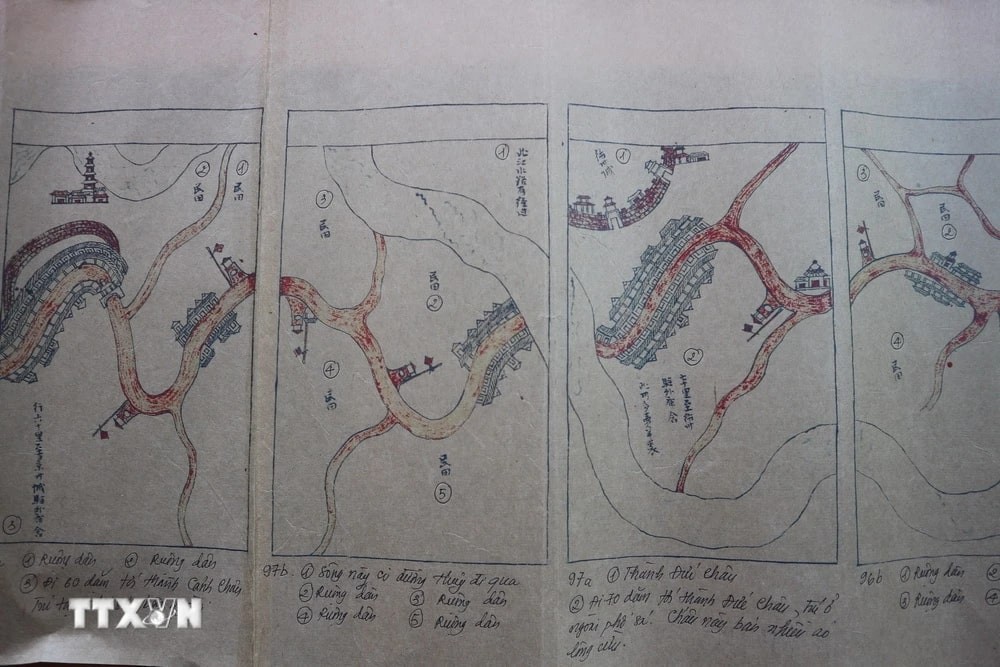 |
| Hoang Hoa Su Trinh Do (The Envoyship Journeys to China – translated as maps and itinerary of the envoy’s journey to China) belonged to the Nguyen Huy family in the central province of Ha Tinh. Photo: TTXVN |
With writings, drawings, and maps, the book recorded the diplomatic relationship between Vietnam and China in the 18th century through the journeys of Vietnamese envoys. It was compiled and edited by Nguyen Huy Oanh (1713-1789) based on documents of previous envoys and historical records as well as notes from his journey in 1766-1767, during which he worked as the main envoy of the Vietnamese delegates.
Ma Nhai (Inscriptions) on the Mable Mountains, Da Nang City (recognized in 2022)
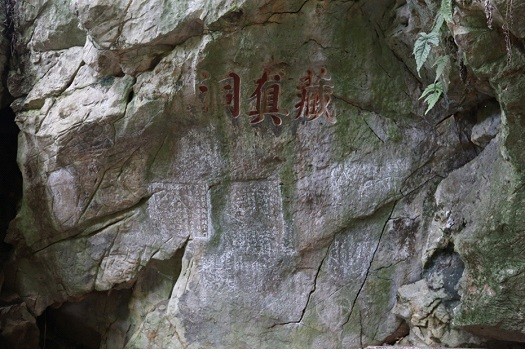 |
| This collection of 78 documents in Chinese and Nom characters (Sino-Nom) was carved on cliffs and caves, with variety in content and literary genres. Photo: Da Nang Leisure |
This collection of 78 documents in Chinese and Nom characters (Sino-Nom) was carved on cliffs and caves, with variety in content and literary genres, created by kings and mandarins of the Nguyen Dynasty, as well as venerable monks and intellectuals, dating from the first half of the 17th century to the 20th century. They store the “memories” of the economic, cultural, political, and social contacts between Vietnam and other countries on the maritime route across the region as well as the role of Vietnamese women in international marriages in the 17th century.
Sino-Nom Documents in Truong Luu Village, Ha Tinh Province (recognized in 2022)
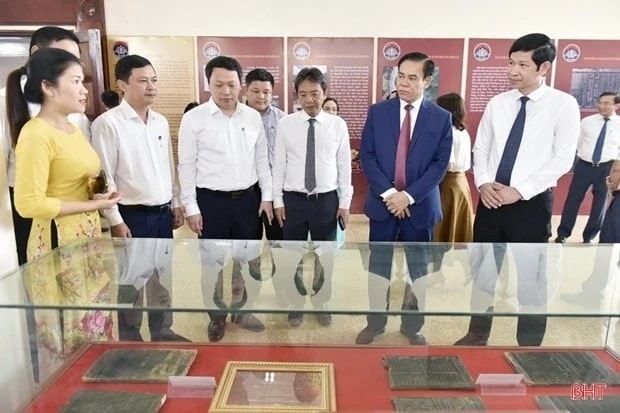 |
| This collection presents a remarkable snapshot of a small village developing into a cultural center in Vietnam and its contribution to society. Photo: BHT |
This collection presents a remarkable snapshot of a small village developing into a cultural center in Vietnam and its contribution to society. The number of royal edicts and administrative documents conferred upon successful people from this village is quite impressive.
This documentary heritage provides a valuable source to study the deeply-rooted common tradition of emphasizing self-cultivation and family education in Asian countries of the Sino Sphere. They are also valuable sources about the adoption and practice of China’s Civil Service Recruitment Examination system in Vietnam and its impact on education, cultural development, and the life of the grassroots.
 | Vietnam News Today (Apr. 1): HCM City Becomes Member of UNESCO Global Network of Learning Cities Vietnam News Today (Apr. 1): Vietnam-Russia roundtable conference on language in diplomatic activities held; Vietnam celebrates “International Day of Zero Waste”; HCM City becomes a ... |
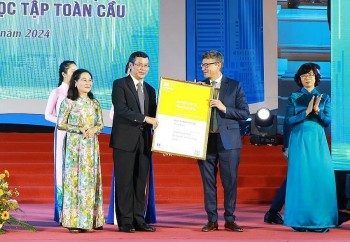 | UNESCO Recognizes HCMC as a "Learning City" On the evening of March 30, the People's Committee of Ho Chi Minh City organized the ceremony to celebrate on the occasion that the city ... |
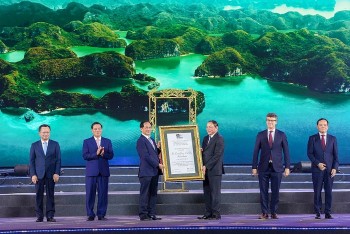 | Ha Long Bay - Cat Ba Islands Dubbed World Natural Heritage by UNESCO The title of World Natural Heritage of Ha Long Bay - Cat Ba Islands was awarded to Hai Phong City and Quang Ninh Province at ... |
Recommended
 Handbook
Handbook
Vietnam Moves Up 8 Places In World Happiness Index
 Multimedia
Multimedia
Vietnamese Turmeric Fish among Best Asian Dishes: TasteAtlas
 Handbook
Handbook
From Lost to Found: German Tourist Thanks Vietnamese Police for Returning His Bag
 Handbook
Handbook
Prediction and Resolution for the Disasters of Humanity
Popular article
 Handbook
Handbook
16 French Films To Be Shown For Free During Tet Holiday In Vietnam
 Handbook
Handbook
Unique Cultural and Religious Activities to Welcome Year of the Snake
 Handbook
Handbook
Reflection on Snakes
 Handbook
Handbook





